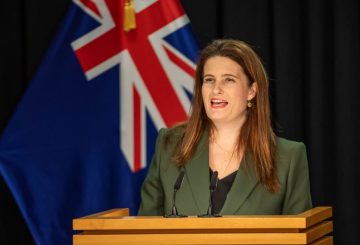Te Páti Máori批评政府的说法,即要求地方议会向居民询问毛利选区的情况是民主的。该党的一位议员指责毛利人后裔的政府议员 “内化” 了针对自己文化的种族主义。
周二,联合政府的《地方政府修正法案》获得通过。该法律要求在不对当地人进行民意调查的情况下设立毛利选区的议会要么举行投票,要么取消选区。
地方政府部长西蒙·布朗说,上届工党政府做出了 “分裂性变革”,剥夺了社区在建立毛利人选区方面的发言权,他声称这破坏了民主。他说,今天是 “地方民主的好日子”。
但是,特帕蒂毛利人议员玛丽亚梅诺·卡帕-金吉认为,只有在他们方便的情况下,政府才支持民主。她质疑为什么农村委员会没有受到质疑,这表明政府对民主的定义不一致。
工党此前已经取消了就毛利选区举行全民公决的必要性,认为其他选区,例如农村选区,不需要投票。工党领袖克里斯·希普金斯批评了这项新法律,称它对毛利人的待遇与非毛利人的待遇不同,并声称每个人都应得到平等对待。
希普金斯否认毛利人在自己的选区有 “额外选票”,称无论是毛利选区还是普通选区,每个人仍然只能获得一票。
该法案是与澳大利亚首都直辖区和新西兰第一党达成的协议的一部分,这两个党都有毛利人议员,还有国民议员。
Kapa-Kingi强调了毛利人代表在地方政府中的价值,他说毛利人选区运作良好,得到了社区的大力支持。全国议员詹姆斯·米格为该法案辩护,称特帕蒂毛利人认为他们对成为毛利人有唯一正确的看法。
他说,无论种族或背景如何,都应重视所有观点,该法案应赋予当地社区在创建毛利人选区方面的发言权。
卡帕-金吉批评米格的言论源于 “内部种族主义”,并提到他的观点反映了人们对特权的更广泛安慰。
米格回应说,他宁愿关注对选民至关重要的问题,也不愿回应卡帕-金吉的言论。






























































